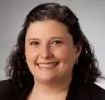Congress' recently-passed Federal Appropriations Act includes new provisions modifying the scope of the Provider Relief Fund payments overseen by the U.S. Department of Health and Human Services (HHS), granting providers new flexibility in how they may use the funds they received. The legislation also authorizes HHS to distribute an addition $3 billion dollars in Provider Relief Fund payments. The legislation was signed into law on December 27, 2020.
Payments from the Provider Relief Fund were distributed quickly in Spring 2020 and many providers accepted funds even as HHS continued to issue guidance defining what it considered permissible uses of the funds. Under the program's terms and conditions, funds may only be used to reimburse health care related expenditures or lost revenue attributable to coronavirus. Under the new legislation, Congress required HHS to permit providers to calculate lost revenues using the guidance HHS had issued as of June 2020, which read as follows:
You may use any reasonable method of estimating the revenue during March and April 2020 compared to the same period had COVID-19 not appeared. For example, if you have a budget prepared without taking into account the impact of COVID-19, the estimated lost revenue could be the difference between your budgeted revenue and actual revenue. It would also be reasonable to compare the revenues to the same period last year.
While questions remain about how providers will report their lost revenues, the new law reverses HHS' more recent statements on calculating lost revenues and restores a presumption of provider flexibility in accounting for lost revenues attributable to coronavirus. HHS guidance from October had required providers to utilize a year-over-year calculation of change in revenue.
The new law also ensures that recipients of Provider Relief Fund payments have flexibility to transfer funds they receive among their corporate parents and subsidiaries. Specifically, Congress required that any reimbursement from the Provider Relief Fund may be allocated (through transfers or otherwise) among subsidiary eligible health care providers, including reimbursement that was marked by HHS as “Targeted Distribution” payments. Previously, guidance from HHS had indicated that, while General Distribution payments could be transferred among subsidiaries, Targeted Distribution payments must remain with the entity that was eligible for the Targeted Distribution payment.
Providers that have received Provider Relief Funds should continue to carefully track HHS' Frequently Asked Questions and other guidance. When not contradicted by Congress, this guidance will define HHS' expectations for the permissible use of the funds and help providers prepare for reporting and audits.
Originally Published by Foley & Lardner, January 2021
The content of this article is intended to provide a general guide to the subject matter. Specialist advice should be sought about your specific circumstances.
We operate a free-to-view policy, asking only that you register in order to read all of our content. Please login or register to view the rest of this article.



